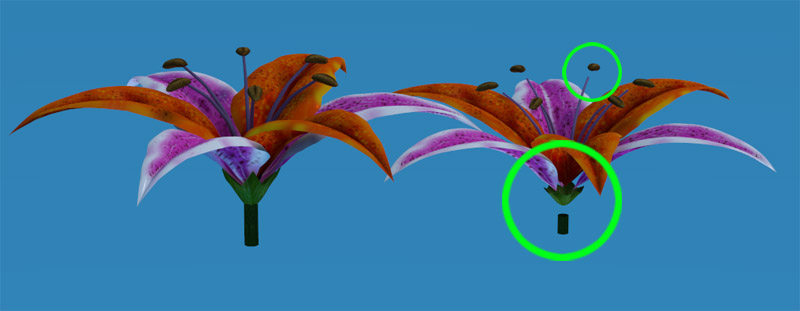I’m running into a few issues on importing objects into zb4R3.
First, the objects are being stripped of materials, and everything becomes “default mat”. Is there a way to import and retain material groups? (The surfaces were done in lightwave, and poser pro sees them fine.)
Second, (and more troubling) the imported obj file is being mangled by zbrush. is there an alternate way to import objects without this occurring?
Here’s an example: A simple lilly modelled to use micromesh on. On the right is how it was modelled, and how it looks in lightwave and poser. On the right, is what happened when I imported it into zbrush, and then just exported it back out.
(Note the detachment of the flower parts, and the shorter stem, as well as lower petal issues.)
Attachments



